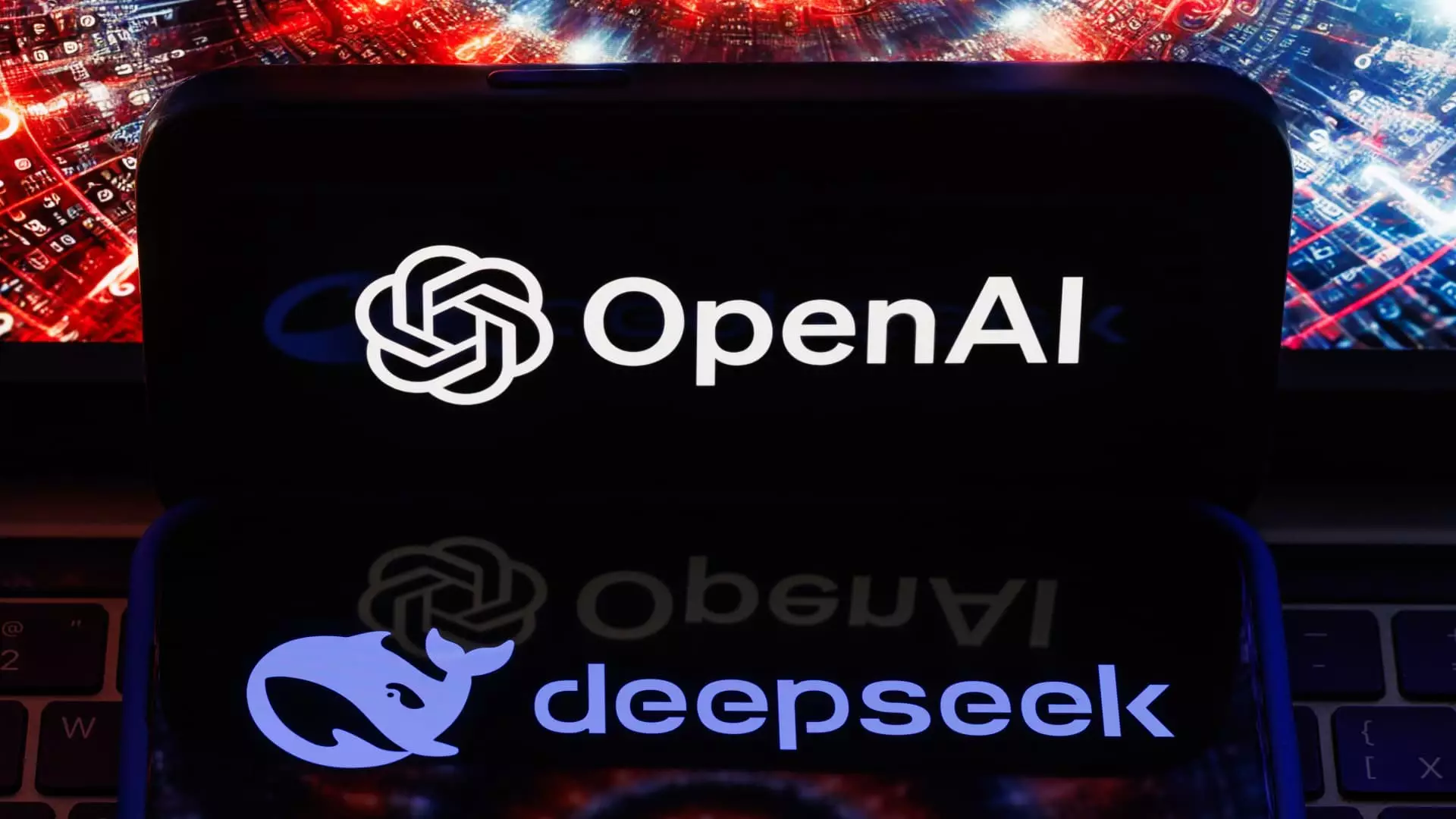The rapid trajectory of artificial intelligence (AI) emerging from China’s DeepSeek has positioned the nation as a formidable competitor in the global AI race, especially against the backdrop of U.S.-China technological rivalry. The revelations from DeepSeek at France’s Artificial Intelligence Action Summit have sparked significant discussions regarding the future of AI, particularly in how it shapes the geopolitical context of technology. Executives from renowned tech firms, including OpenAI, have publicly acknowledged that DeepSeek’s developments cannot be overlooked and signify a vital shift in the landscape of AI innovation.
One of the most striking aspects of DeepSeek’s recent advances is the cost-effective creation of their new AI model, which reportedly had a total training cost of under $6 million. This figure starkly contrasts with the vast resources that traditional players in the AI market, particularly in the West like OpenAI and Anthropic, continue to invest. This contrast in investment raises critical questions about the sustainability and long-term viability of current AI development paradigms, which heavily rely on massive financial inputs.
During interviews conducted at the summit, Chris Lehane, OpenAI’s chief global affairs officer, highlighted the competition’s escalating stakes. He characterized the development of AI capabilities between the United States and China as one akin to only having two countries capable of generating electricity on a broad scale. This analogy emphasizes the strategic importance of maintaining leadership in AI research and development, as the ramifications extend beyond mere business competition into national security and global influence.
However, not all views align on the immediate threat posed by DeepSeek. Many tech leaders expressed caution, suggesting that although DeepSeek has demonstrated impressive advancements, the perceived threat to Western AI firms remains limited for the time being. This assertion aligns with the belief that despite DeepSeek’s progress, the significant investments made by established firms still provide them with a buffer against potential disruptions brought by a newcomer.
The Question of Censorship and Ethical AI
However, the excitement surrounding DeepSeek is tempered by concerns relating to censorship and the ethical implications of its AI outputs. Observers point out that the AI app developed by DeepSeek avoids sensitive topics, such as historical events like the Tiananmen Square incident, which raises ethical concerns about the technology’s alignment with democratic values. This reinforces the idea that while the technological capabilities of the model may be advancing, the bedrock principles guiding these developments present a stark contrast to those in the West, where such limitations on discourse are less prevalent.
Meredith Whitaker, president of the Signal Foundation, noted that these developments do not necessarily indicate a shift in power dynamics within the tech industry. The prevailing sentiment remains that the predilection towards larger and more complex AI models, epitomized by leading Western AI firms, is not likely to be disrupted in the near term.
Challenging DeepSeek’s cost claims, industry experts have led inquiries revealing estimates that suggest the company’s total historical expenditure exceeds $500 million. This raises skepticism around the viability of DeepSeek’s business model if it indeed relies on a much larger financial backbone than initially stated. The assertion that DeepSeek has achieved such efficiency could be an oversimplification, especially if its advances are built on distilling insights from more powerful models from American counterparts.
In this context, Reid Hoffman, co-founder of LinkedIn, endorsed the notion that while DeepSeek’s advances are notable, they should not be misconstrued as an imminent threat to the leading positions of firms like OpenAI and Anthropic. Hoffman’s comments encapsulate a critical perspective within the technology sphere that realizes the limitations of DeepSeek’s current standing.
While DeepSeek’s advancements are significant and suggest a narrowing gap in the race for AI supremacy between the U.S. and China, the technological landscape remains complex and layered. The implications of DeepSeek’s developments touch on not just competition in innovation, but also ethical control, spending paradigms, and the broader geopolitical environment. As AI continues to evolve, its intersection with issues of governance and moral responsibility will become increasingly significant. The future landscape of AI will not only be defined by technological prowess but will also necessitate a thoughtful discourse around governance, values, and the ethical implications of advancements in this powerful domain.

